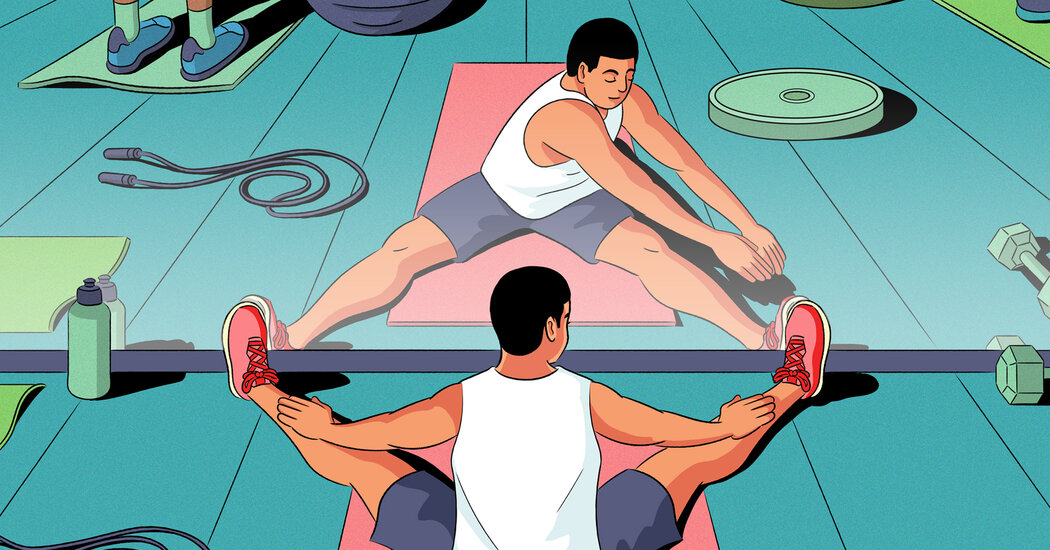As a sprint relay track cyclist on the U.S. Olympic Team, Joshua Hartman spends much of his training time lifting weights to build power and speed. In 2023, while trying to deadlift a load near the limit of his ability, he noticed that his form was off, and the weight wasn’t moving as quickly as he wanted.
“Instead of listening to the small signs my body was giving me, like tightness in my hips and knee, I ignored and pushed through it,” Mr. Hartman said.
At the highest weight of his final set, he felt a pain in his back. Hoping it was nothing, he moved on to the next exercise.
“I bent over to pick up the bar and I was in so much pain I wanted to cry,” Mr. Hartman said.
The next day he was in agony, and his back was swollen and painful to touch. The diagnosis was a tissue tear, and he was ordered to stop training, jeopardizing his shot at the October Pan American Games and perhaps even the 2024 Olympics.
Elite athletes often walk a tightrope, pushing themselves hard while also listening to their bodies to avoid injury. The stakes are lower for the rest of us, but there is an important lesson to take from Mr. Hartman’s experience: While challenging yourself is important, ignoring pain can lead to problems.
Listening to your body doesn’t mean stopping the moment your legs begin to ache or never stretching your limits. But it does involve bringing awareness to your workouts and a willingness to change your exercise plan when necessary.
Recognize the wrong kind of pain.
Aches and pains are part of exercising, said Dr. Jordan Metzl, a sports medicine physician at Hospital for Special Surgery, author and triathlete.
“If it doesn’t hurt a little bit you’re probably not pushing hard enough,” he said.
The key difference between healthy discomfort and unhealthy pain is in whether it alters the mechanics of your movement. That’s when you need to stop and take a rest day, or see a professional.
To learn to recognize changes in your form, practice “body scans” during your next workout session, said Sean McCann, a psychologist for the U.S. Olympic and Paralympic Committee.
This might mean noticing how your legs feel when running on a flat surface as opposed to charging up a hill, or how your arm muscles feel when you add ten pounds to your bench press. Notice the feeling of muscle soreness (which is normal) and watch out for joint pain (which is often a sign of trouble), Dr. McCann said.
The discomfort may go away after your body warms up, but if it doesn’t, it’s probably time to turn around. If you’re training for a 10K, for instance, and feel a twinge in your hip that hurts when you sprint, take some time off or switch to another exercise. This requires patience and discipline, he said.
Manage discomfort with mindfulness.
While expert athletes are accustomed to the feeling of intense exercise, everyday athletes often prefer to distract themselves from their burning lungs and quads, said Diana Winston, director of mindfulness education at the U.C.L.A. Mindful Awareness Research Center. But she advises a different approach: Stop, Take a breath, Observe and Proceed (or STOP).
If you’re working through a set of back squats and begin to feel uncomfortable, take a moment to observe the sensations in your body. Are your muscles aching from the heavy barbell on your back and the effort it takes to come up out of the squat, or are you experiencing a worrisome ache on one side of your back?
“You don’t necessarily embrace the pain,” Dr. McCann said, “but you become familiar with it, and then you’re more skillful at managing it, more skillful at interpreting what it means.”
Don’t forget recovery.
Recovery from exercise is almost as important as exercise itself if you want to improve your fitness, said Dr. Samuel Galloway, an instructor at the U.C. San Diego School of Medicine who specializes in sports medicine. This means paying attention to sore muscles and taking a rest day at least once or twice a week.
A common mistake people make, especially during a burst of motivation, is ramping up their exercise too quickly and not allowing enough time to recover, he said.
Recovery involves hydration, healthy nutrition and quality sleep. Your body needs rest to build muscles and replenish the energy it used. If you feel exhausted and sore, take an active rest day. Go for a walk, stretch or do some gentle yoga.
Fortunately for Mr. Hartman, a week of complete rest and then three months of rehabilitation exercises did the trick. He qualified for the Pan American Games and his team placed fourth, while he scored a personal best.
Looking back, Mr. Hartman said he wished he had stopped and asked for feedback on his form from his coach the second he felt something was off.
“Me missing one day of training is not going to end my career,” Mr. Hartman said, “but me pushing and hurting myself definitely will.”
Hilary Achauer is a freelance writer covering health and fitness.







